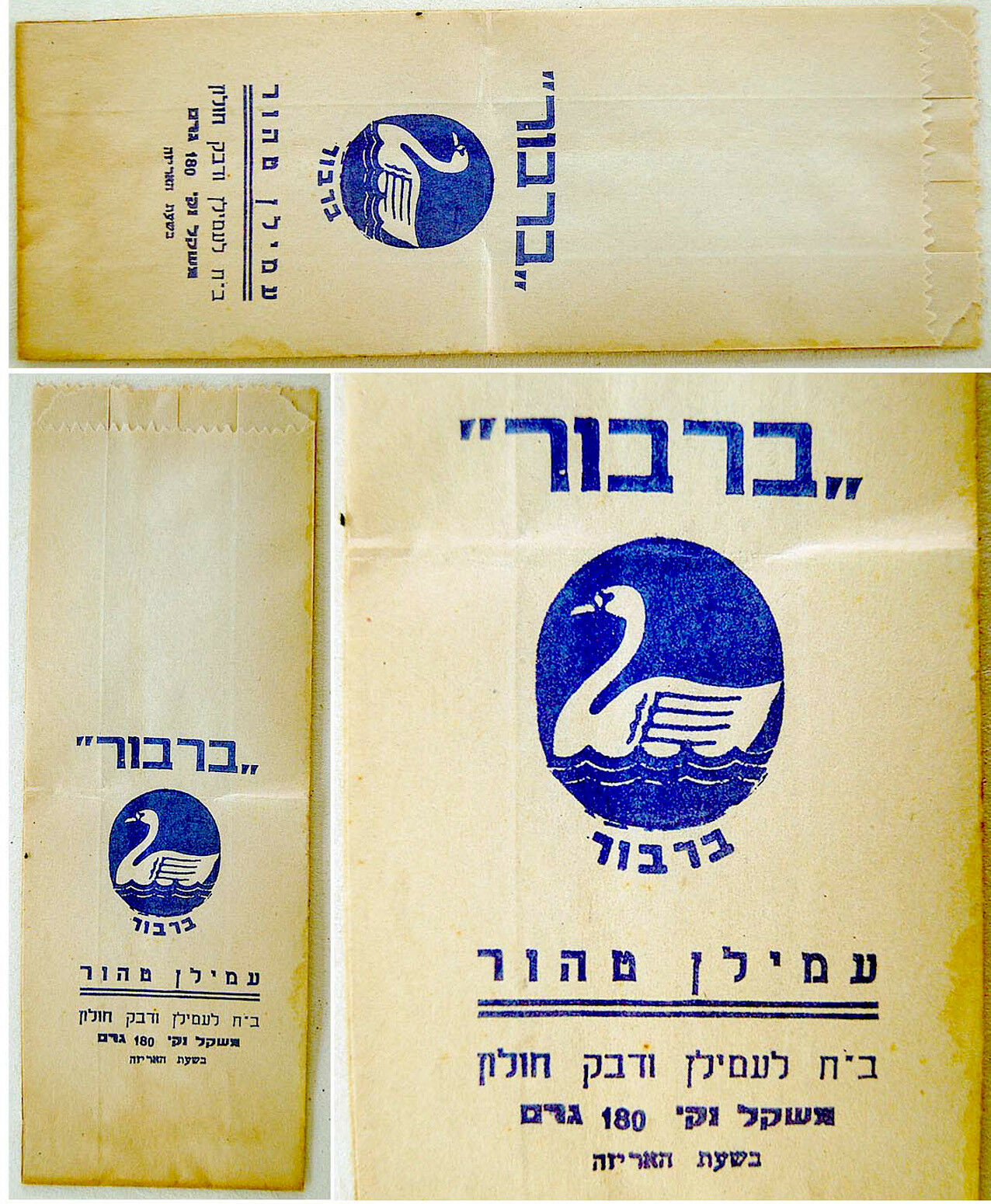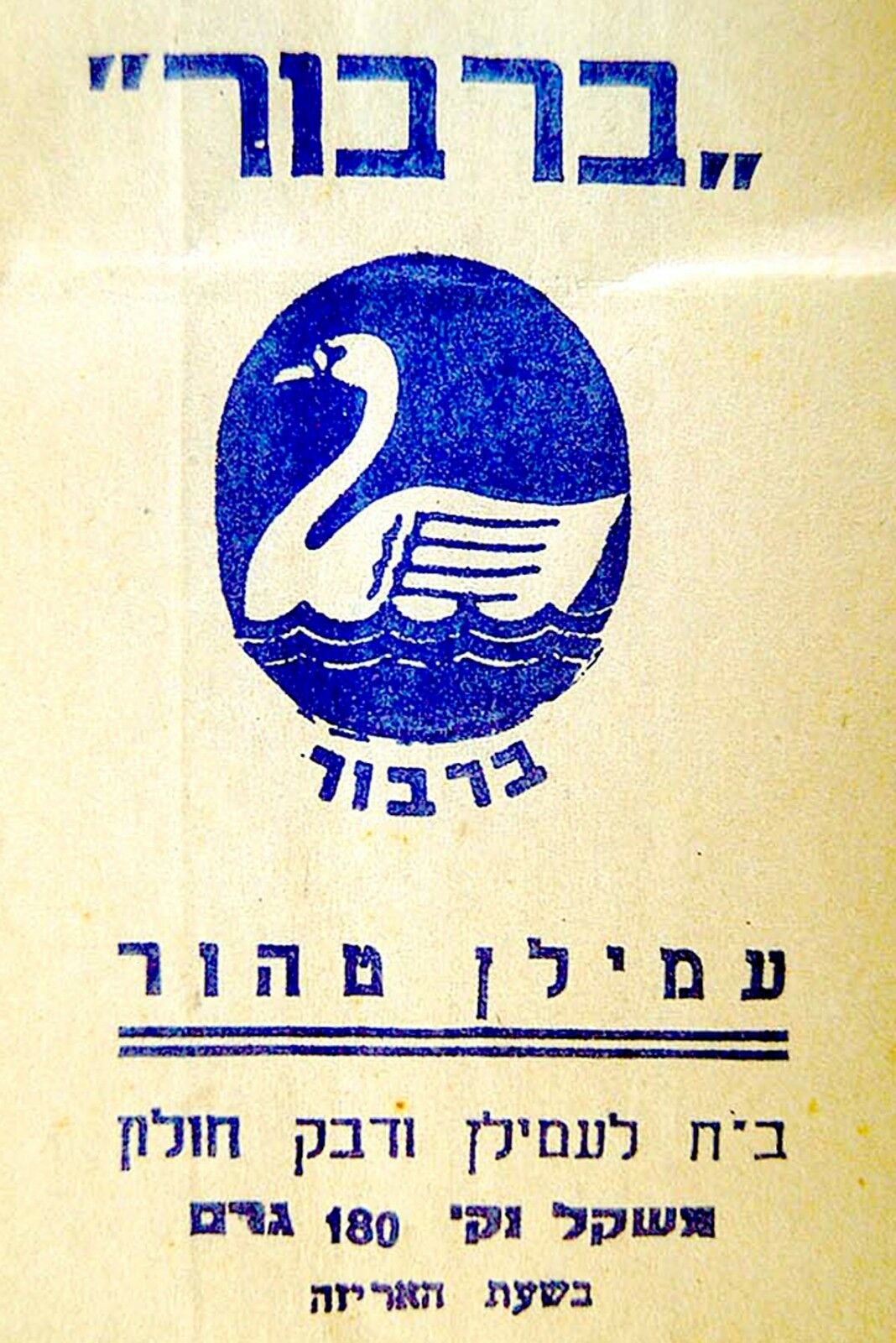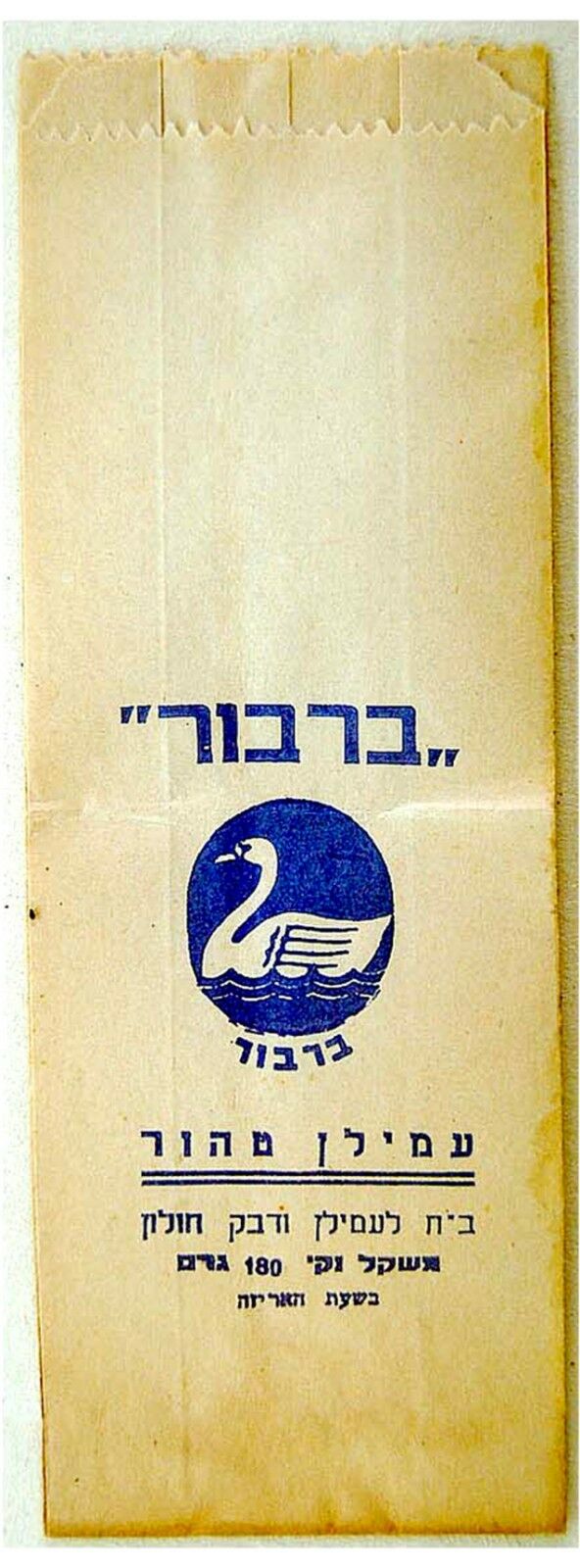-40%
1950 Israel ADVERTISING PAPER BAG Hebrew STARCH POWDER Jewish SWAN Holon JUDAICA
$ 20.59
- Description
- Size Guide
Description
DESCRIPTION: Here for sale is an ORIGINAL Hebrew - Eretz Israeli JEWISH illustrated ADVERTISING paper bag which was designed and manufactured in Israel in the 1950's up to the 1960's . The ADVERTISING illustrated BAG contained 180 grams of PURE STARCH POWDER , Very likely for IRONING LAUNDRY rather than for FOOD PROCESSING.
The pure starch powder "BARBUR - SWAN" was manufactured by the "BARBUR" Chemical Industries in Holon ( Cholon ) Israel
.
A nice JUDAICA - ISRAELIANA collectible piece. The SIZE is around 3.0" x 8 " . Very good condition
.
Unused. Clean . ( Please look at scan for actual general image )
Will be shipped flat in a protective packaging.
PAYMENTS
:
Payment method accepted : Paypal.
SHIPPMENT
: Shipp worldwide via registered airmail is $ 19 . Will be shipped flat in a protective packaging.
Handling around 5 days after payment.
Starch or amylum is a polymeric carbohydrate consisting of a large number of glucose units joined by glycosidic bonds. This polysaccharide is produced by most green plants as an energy store. It is the most common carbohydrate in human diets and is contained in large amounts in staple foods such as potatoes, wheat, maize (corn), rice, and cassava. Pure starch is a white, tasteless and odorless powder that is insoluble in cold water or alcohol. It consists of two types of molecules: the linear and helical amylose and the branched amylopectin. Depending on the plant, starch generally contains 20 to 25% amylose and 75 to 80% amylopectin by weight.[3] Glycogen, the glucose store of animals, is a more branched version of amylopectin. In industry, starch is converted into sugars, for example by malting, and fermented to produce ethanol in the manufacture of beer, whisky and biofuel. It is processed to produce many of the sugars used in processed foods. Dissolving starch in warm water gives wheatpaste, which can be used as a thickening, stiffening or gluing agent. The biggest industrial non-food use of starch is as an adhesive in the papermaking process. Starch can be applied to parts of some garments before ironing, to stiffen them. **** Swans are birds of the family Anatidae within the genus Cygnus. The swans' close relatives include the geese and ducks. Swans are grouped with the closely related geese in the subfamily Anserinae where they form the tribe Cygnini. Sometimes, they are considered a distinct subfamily, Cygninae. There are six or seven species of swan in the genus Cygnus; in addition there is another species known as the coscoroba swan, although this species is no longer considered one of the true swans. Swans usually mate for life, though "divorce" does sometimes occur, particularly following nesting failure, and if a mate dies, the remaining swan will take up with another. The number of eggs in each clutch ranges from three to eight. Contents [hide] 1 Etymology and terminology 2 Description 3 Distribution and movements 4 Behaviour 5 Systematics and evolution 5.1 Phylogeny 5.2 Species 5.3 Fossil record 6 In culture 7 See also 8 References 9 External links Etymology and terminology[edit] The English word 'swan', akin to the German Schwan, Dutch zwaan and Swedish svan, is derived from Indo-European root*swen (to sound, to sing).[1] Young swans are known as swanlings or as cygnets; the latter derives via Old French cigne or cisne (diminutive suffix -et "little") from the Latin word cygnus, a variant form of cycnus "swan", itself from the Greek κύκνοςkýknos, a word of the same meaning.[2][3][4] An adult male is a cob, from Middle English cobbe (leader of a group); an adult female is a pen.[5] Description[edit] An adult trumpeter swan in Jackson Hole, Wyoming Swans are the largest extant members of the waterfowl family Anatidae, and are among the largest flying birds. The largest species, including the mute swan, trumpeter swan, and whooper swan, can reach a length of over 1.5 m (59 in) and weigh over 15 kg (33 lb). Their wingspans can be over 3.1 m (10 ft).[6] Compared to the closely related geese, they are much larger and have proportionally larger feet and necks.[7] Adults also have a patch of unfeathered skin between the eyes and bill. The sexes are alike in plumage, but males are generally bigger and heavier than females.[8] The Northern Hemisphere species of swan have pure white plumage but the Southern Hemisphere species are mixed black and white. The Australian black swan (Cygnus atratus) is completely black except for the white flight feathers on its wings; the chicks of black swans are light grey. The South American black-necked swan has a white body with a black neck.[9] The legs of swans are normally a dark blackish grey colour, except for the two South American species, which have pink legs. Bill colour varies: the four subarctic species have black bills with varying amounts of yellow, and all the others are patterned red and black. Although birds do not have teeth, swans have beaks with serrated edges that look like small jagged 'teeth' as part of their beaks used for catching and eating aquatic plants and algae, but also molluscs, small fish, frogs and worms.[10] The mute swan and black-necked swan have lumps at the base of their bills on the upper mandible.[11] Distribution and movements[edit] See also: List of Anseriformes by population Whooper swans migrate from Iceland, Greenland, Scandinavia, and Northern Russia to Europe, Central Asia, China, and Japan Swans are generally found in temperate environments, rarely occurring in the tropics. A group of swans is called a bevy or a wedge in flight. Four (or five) species occur in the Northern Hemisphere, one species is found in Australia and New Zealandand one species is distributed in southern South America. They are absent from tropical Asia, Central America, northern South America and the entirety of Africa. One species, the mute swan, has been introduced to North America, Australia and New Zealand.[7] Several species are migratory, either wholly or partly so. The mute swan is a partial migrant, being resident over areas of Western Europe but wholly migratory in Eastern Europe and Asia. The whooper swan and tundra swan are wholly migratory, and the trumpeter swans are almost entirely migratory.[7] There is some evidence that the black-necked swan is migratory over part of its range, but detailed studies have not established whether these movements are long or short range migration.[12] Behaviour[edit] A mute swan landing on water. Due to the size and weight of most swans, large areas of open land or water are required to successfully take off and land. Swans feed in the water and on land. They are almost entirely herbivorous, although they may eat small amounts of aquatic animals. In the water, food is obtained by up-ending or dabbling, and their diet is composed of the roots, tubers, stems and leaves of aquatic and submerged plants.[7] Mute swan threatens a photographer in Toyako, Japan. Although swans only reach sexual maturity between 4 and 7 years of age, they can form socially monogamous pair bonds from as early as 20 months that last for many years,[13] and in some cases these can last for life.[14] The lifespan of the mute swan is often over 10 years, and sometimes over 20, whereas the black-necked swan survives for less than a decade in captivity.[15] These bonds are maintained year-round, even in gregarious and migratory species like the tundra swan, which congregate in large flocks in the wintering grounds.[16] Their nest is on the ground near water and about a metre across. Unlike many other ducks and geese, the male helps with the nest construction. Average egg size (for the mute swan) is 113×74 mm, weighing 340 g, in a clutch size of 4 to 7, and an incubation period of 34–45 days.[17] With the exception of the whistling ducks they are the only anatids where the males aid in incubating the eggs.[18] Swans are known to aggressively protect their nests. One man was suspected to have drowned in such an attack.[19][20] ebay4018












